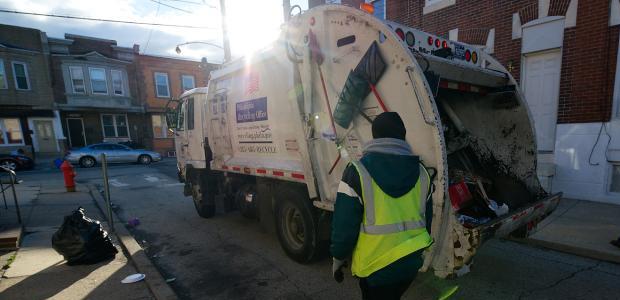
NIOSH Taking Comments on Research Agenda for Service Industries
The draft says suggested areas on which to focus research include same-level falls for food service workers; fatal injuries among installation, maintenance, and repair occupations; and motor vehicle injuries, falls, and struck by or against injuries among waste collection workers.
NIOSH has posted a draft National Occupational Research Agenda for Services and is asking for public comments on it, with a comment deadline of March 30. The draft is available at https://www.regulations.gov (enter CDC-2018-0006 in the search field), and comments may be submitted there.
The draft lists 10 services industries that it says should be targeted for specific research and intervention, based on the number of cases and the injury rates in those 10, according to 2015 BLS Survey of Occupational Injury data. In descending order, the 10, with their 2015 number of workers and 2015 rate of injuries and illnesses per 100 full-time workers, are:
- Traveler accommodation: 68,600, 4.7
- Waste collection: 10,800, 6.1
- Restaurants and other eating establishments: 181,300, 2.9
- Services to buildings and dwellings: 52,100, 3.4
- Amusement parks and arcades: 6,900, 5.4
- Other personal services (pet care, parking lots): 9,900, 4.6
- Other amusement and recreation industries: 19,200, 3.1
- Special food services (caterers, mobile food): 14,600, 3.8
- Consumer goods rental: 6,500, 4.9
- Performing arts: 4,000, 5.2
The draft says suggested areas on which to focus research include same-level falls for food service workers; fatal injuries among installation, maintenance, and repair occupations; motor vehicle injuries, falls, and struck by or against injuries among waste collection workers; overcoming language barriers of foreign-born workers; and developing strategies to reach volunteers, who are common in some service industries.
The document's other objectives including developing and disseminating intervention programs for preventing ergonomic injuries; strategies to reduce injuries among contingent or temporary workers; reducing chronic illnesses, particularly ones associated with chemical exposures; and reducing hearing loss among service workers. Some of these service sectors involve very large numbers of workers with hazardous noise exposure, it says, identifying repair and maintenance, arts and entertainment, and recreation workers as some of these.
It cites 2015 and 2016 studies that found 20 percent of noise-exposed service workers have a material hearing impairment, but in some industries that percentage is even higher, at 23-36 percent.